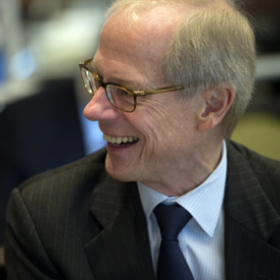
How Philanthropy Can Turn Dark Realities Into Hope
In February 2001, the Rockefeller Brothers Fund offered me the opportunity to lead the foundation into a new century. Just a few months later, the future of that new century was irreversibly recast.
On a beautiful September morning, I was sitting on the tarmac at JFK when armed policemen boarded the plane and ordered us to evacuate. In the terminal, everyone was glued to CNN, horrified by the use of passenger airplanes as weapons of mass destruction and the murder of nearly 3,000 people at the World Trade Center. My only thought at that moment was to get home to my wife and infant son. On a day of such unimaginable evil, I sought solace in the company of newborn innocence. But the bridges and tunnels were closed. The subway wasn’t running. So I walked.
The next day I went to work. I didn’t know what else to do. From my office, I had a view of where the Twin Towers had stood the day before. It was clear to me that philanthropy had a unique set of responsibilities at that moment of crisis, but as I sat and watched the smoke rising from the site, I struggled to collect my thoughts about how we should respond.
One thing was clear: In the span of an hour, the promise of a new century had given way to a new "Age of Anxiety," to borrow W.H. Auden’s apt phrase.
Click here to read the full article on The Chronicle of Philanthropy (paywall).

